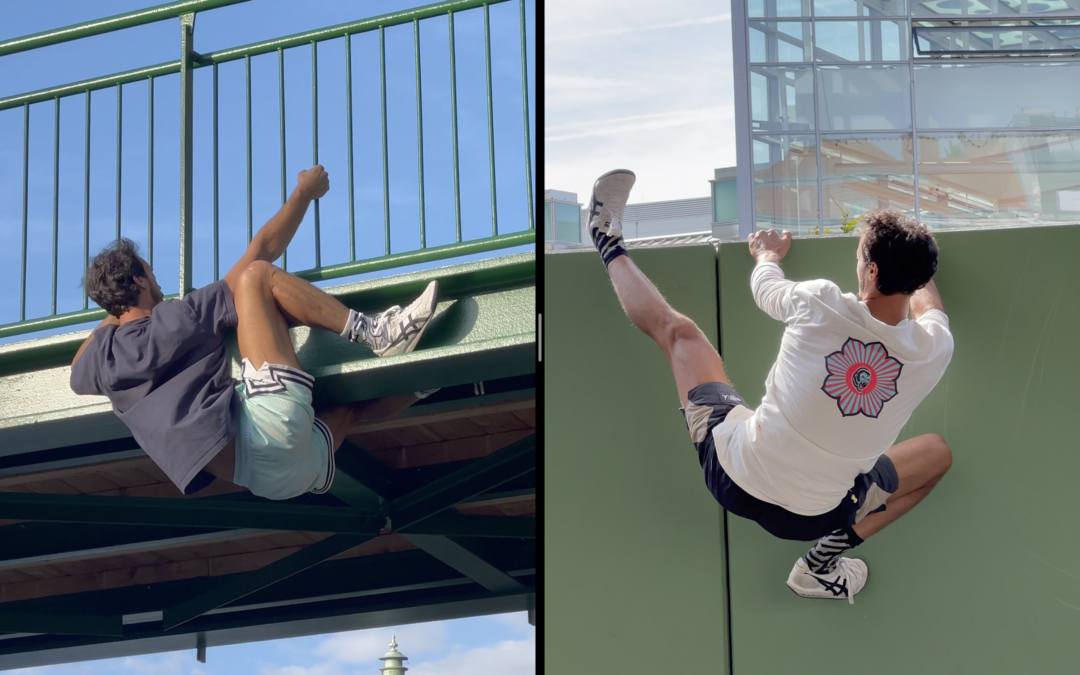
Irreducibility of movement fields
Nowadays’ tendency for simplification, deconstruction, and decomposition of a totality into smaller fragments led us to one fundamentally incorrect axiom: studying a piece of a totality will give us information about the behavior of the whole.
This is false because there is a limit to the amount of breakdown one can perform on a global part before it changes into something else.
“take table salt, no matter how hard you look, you will not find the yellow-green of the chlorine or the silver of the sodium; if you reduce the salt any further, back to the component elements, you will lose all of the qualities of the salt.” (1)
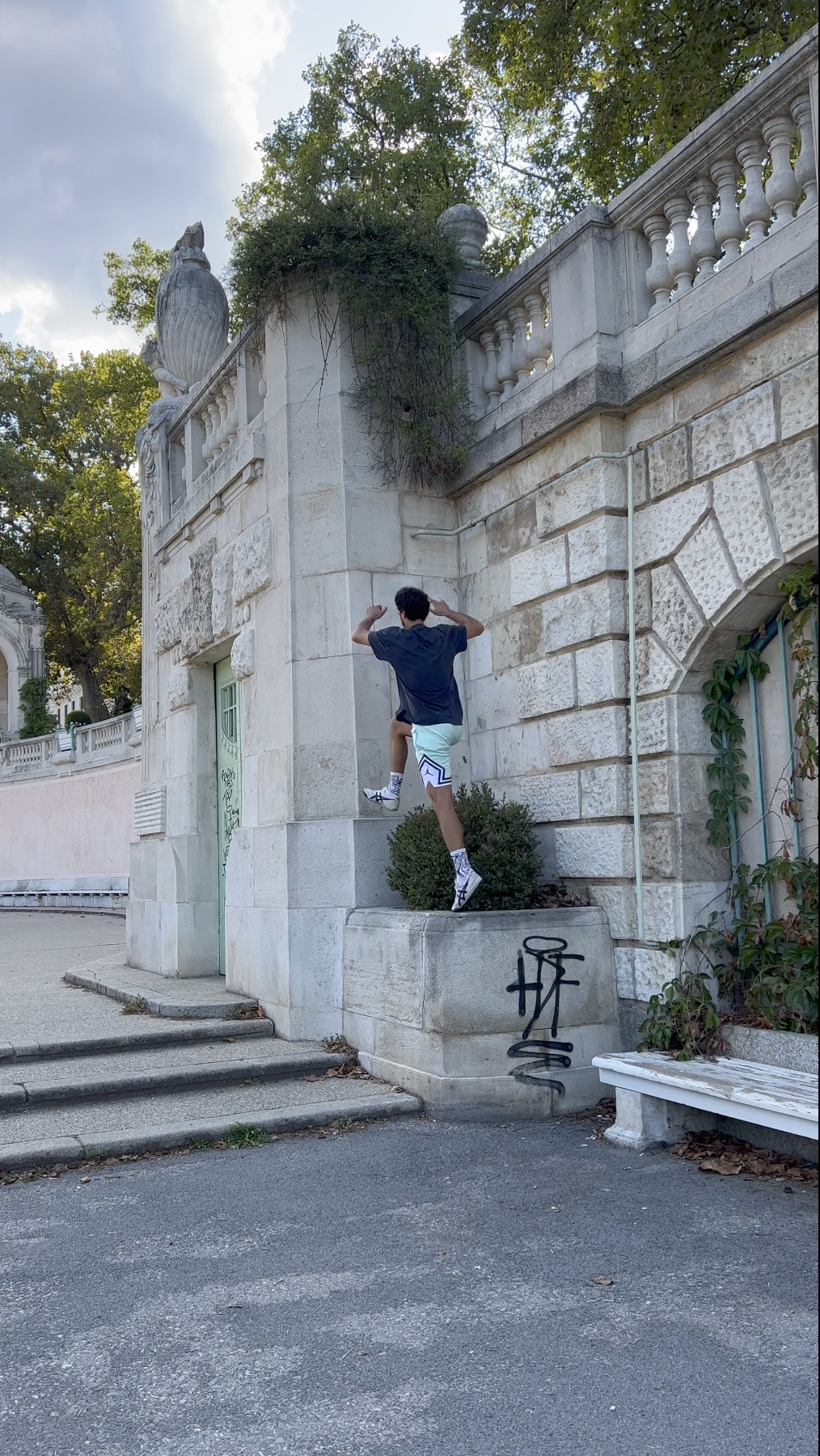
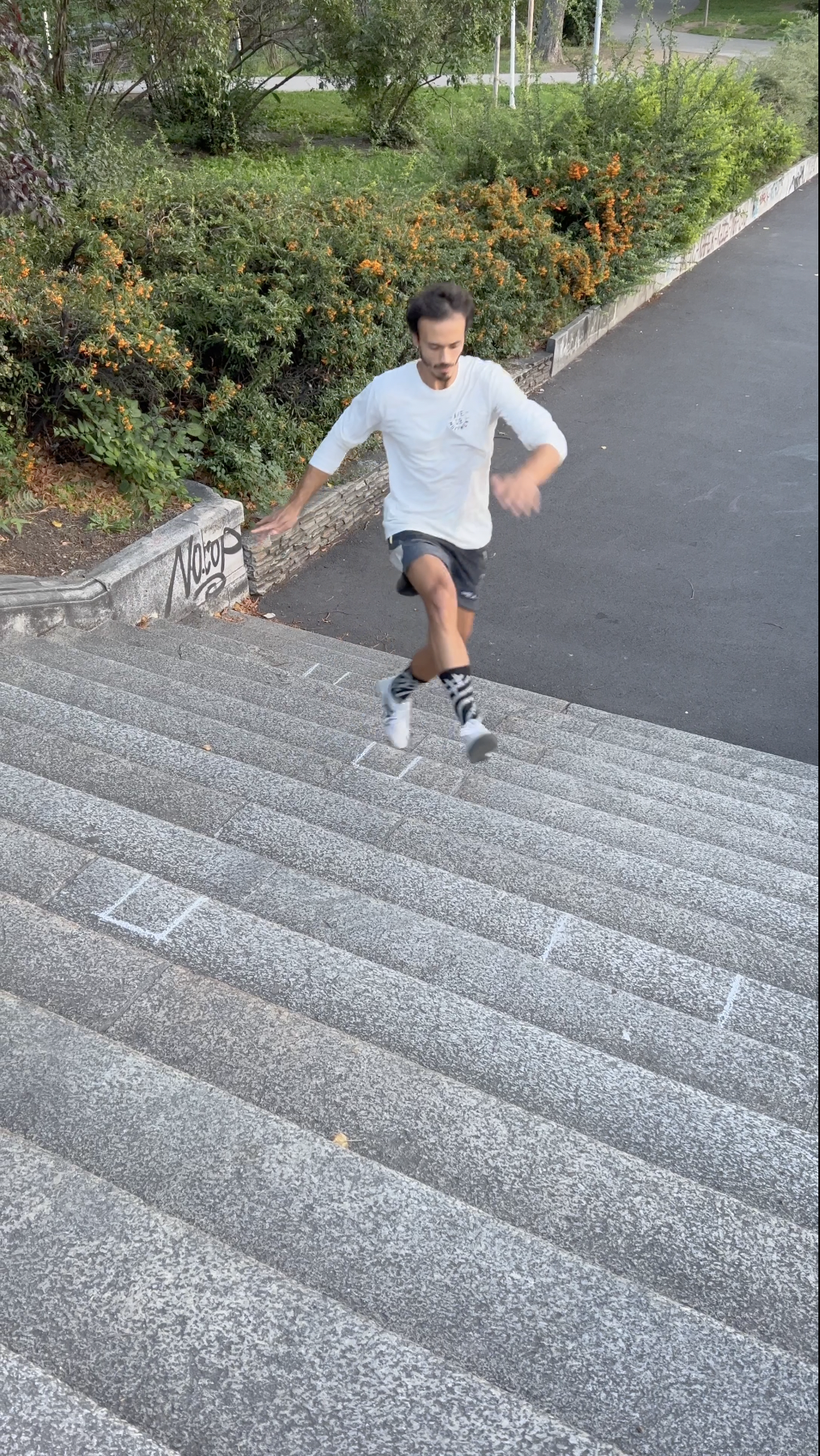
In the body-mind continuum there are specific emerging adaptations coming from the confrontation with a motor problem that simply will not happen, unless one is exposed to it. If this is overlooked a lot of work might be wasted because of an incorrect understanding, regardless of the quality of the process involved.
I argue the reversible vision that perceives climbers “those with a strong grip”, athletes “those with quick legs”, acrobats “those with flexible backs”, fighter “those with sharp reflexes” and therefore proceeds to train only those qualities in isolation with the promise of making people climbers, athletes, acrobats, fighters one day …is very much delusional and fitnesscentric.
The work can and should be started immediately.
In fact, these are non-reversible povs. Athletes have quick legs because of what they do, but not necessarily having quick legs will make you an athlete.
The very idea of “fundamental capacities” is plain wrong.
For example, the indication that one should at least be able to do five pull ups before he / she can climb is absurd to say the least. And how do I know this for certain? Because if you go to a climbing gym, you can see beginners go at the full activity, regardless of the conditions of their capacity. The field is made of multiple strata: pattern recognition, memory, mental rotation, limbs and torso coordination, balance, foot placement, weight shifting capacity, forces redistribution …forget about pulling strength alone.
I remember there was a debate a few years back on whether a person could start plyometrics safely from scratch or if at least a bodyweight squat was necessary (there was a large ongoing case study on this). Well …just go light and try, won’t you? We are not talking about the validation of a dangerous medicine. We do not need useless studies. Evidence based practice should always be accompanied by practice based evidence and should help mature interesting and relevant questions. Not minor onanistic matters. My experience is that in this instance a person can be taught to bounce, hop, jump, sissonne, assemble, develop a sharp footwork and so on… without having even ever seen a barbell from miles away. On top of this, I saw very few people get injured in the process.
In the field of movement education, we can do better than having people start their journey doing strength work for 3 years before actually diving into the core of their studies. And that is exploring movement principles through dedicated platforms and situations, where dynamic skills are studied in their minimal configuration of the needs imposed on demand intrinsically present in every field.
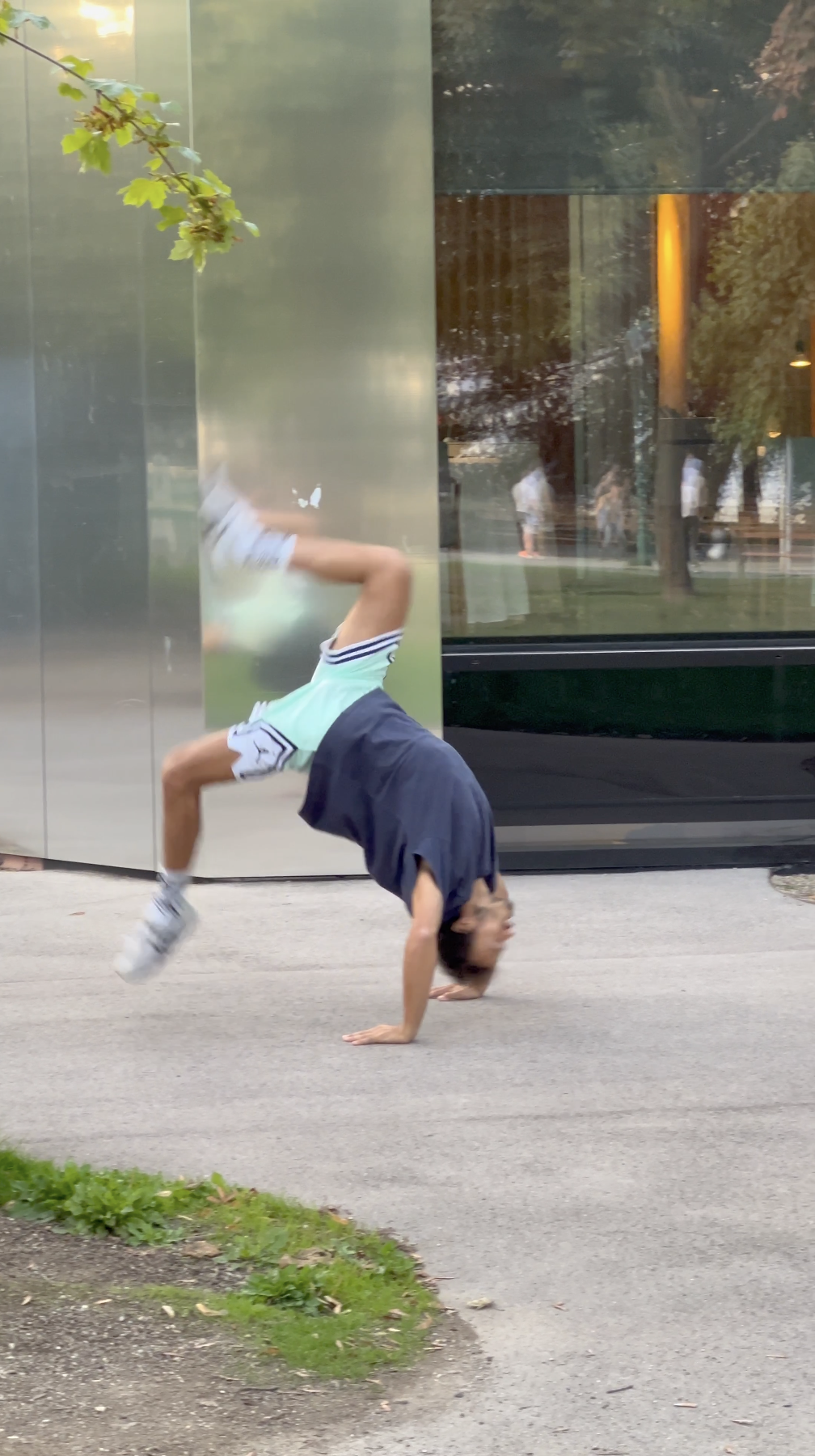
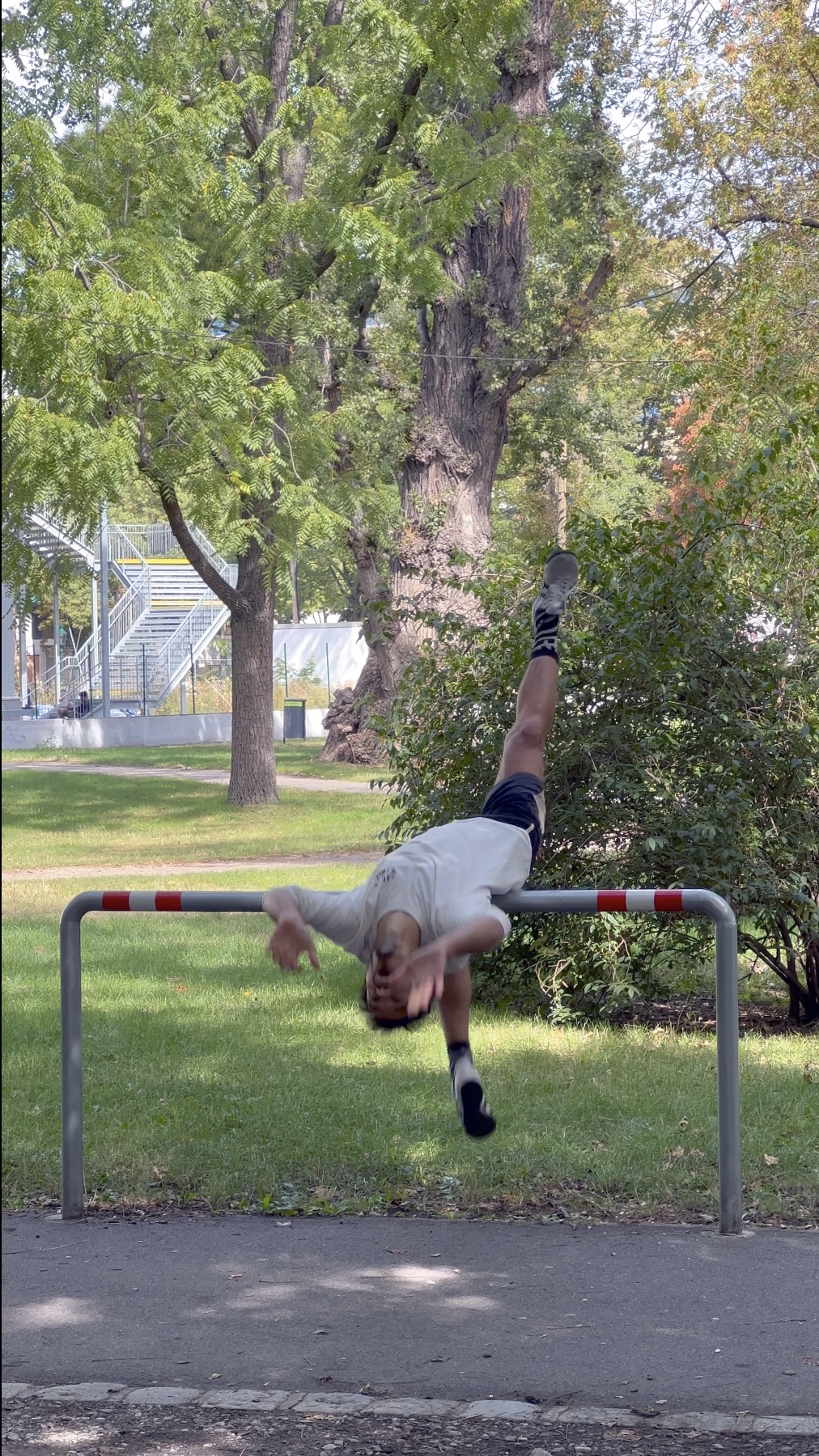
The aspects that need to be taken into account are four:
1. Motor control, regulation and coordination
The intricacies, the concertation, the lines of trajectories of the various body parts, the coordinative abilities needed, and the fine modulation of tension that are fundamental to producing quality outcomes.
2. Specificity of the structural phase
The capacity of the body to behave like different materials depends on environmental demands.
In fact, it can: tense like an elastic band when quickly displacing in space, it can tighten in accurate concertation to contract and expand in volume, it can coordinate to produce finely controlled reversible actions, it can turn rock solid if it needs to anchor you somewhere, it can vibrate to dissipate impact without causing any harm.
Therefore, one should ask the question: which state is needed for the Elastic? Tensile? Soft? Stiff? Colloidal?
The science of soft matter is still in the process of being fully understood yet it appears to be what can best approximate the complexity of the human biological design.
See here I post I made on the matter to better grasp what I am talking about.
3. Specificity of motor qualities
The specific demands in terms of simplified kinematic and kinetics of movement. Listing from the dynamic correspondence criteria from Verkhoshansky and Siff here: the amplitude and direction of movement, The accentuated region of force production, The dynamics of the effort, The rate and time of maximum force production, The regime of muscular work.
I recommend continue the in-depth study on the matter in the book Supertraining (2).
4. Relationship to external conditions
What is the composition of the perception-action dynamics, the time windows, the spatial constraint, the type of surfaces involved, the type of equipment needed and so forth…
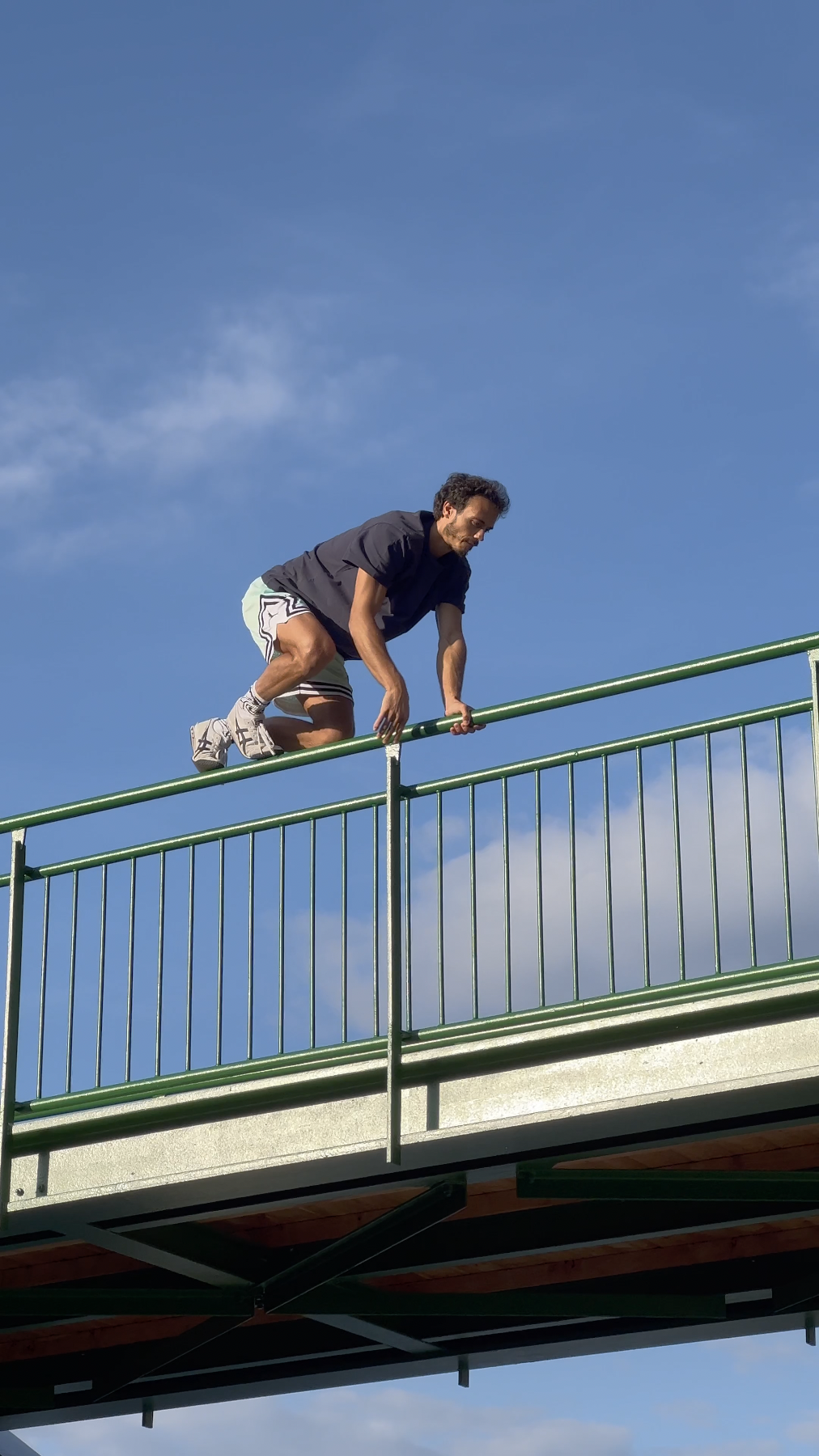
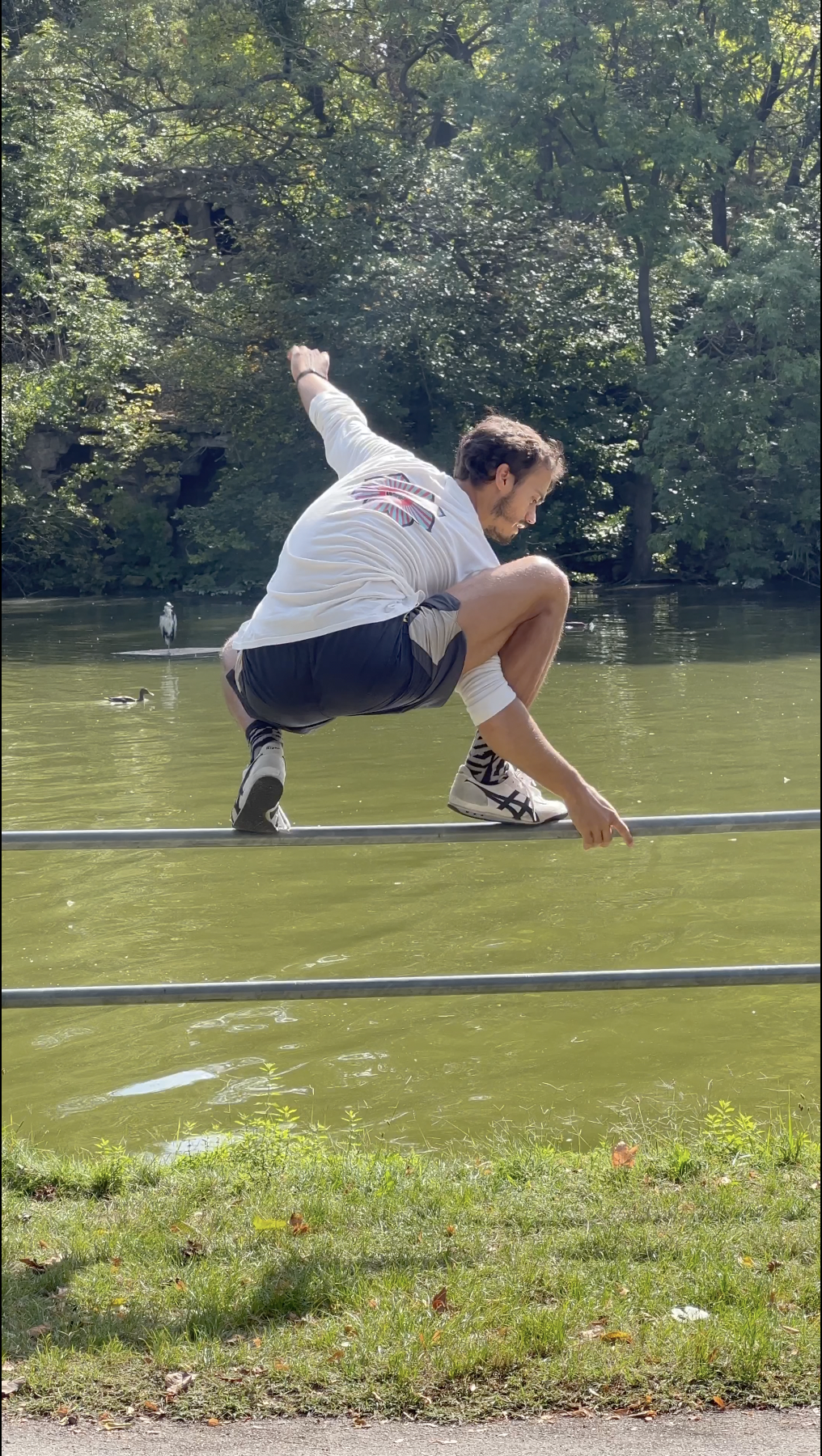
Now, to elucidate the matter further I have provided a visual clarification.
Notice in the clip the two scenarios: the first ones (wearing white socks with black textures) are more open situations, and the seconds (wearing black socks with white textures) are platforms for movement investigation, study and refinement.
What separates the two is the degree of risk, the extrinsic difficulty, and the emotional involvement required to dwell in these matters.
This makes them twins on a continuum. The first ones are used to consolidate knowhow, the second ones to expand expertise.
Knowing this, the development of skills will fall into the second setting, moving over time to the first to get strengthened as deeper neural grooves. Despite its counterintuitive nature, capacity build up will not improve one’s proficiency to manage a movement scenario. Everyone thinks more mobility, strength, endurance, power, are needed but this is rarely the case in my observations.
Capacity training should only be added once it is really limiting one’s development, that is, in case of:
– Complete absence of training background (i.e. one can’t hang for 10 seconds)
– In case of rehab (i.e. one can’t move without pain and restrictions in the joints, fascia, muscles etc.)
– Prehab before specific situations (i.e. one isn’t used to inverting and placing the hands on the ground hence the wrists quickly become fatigued).
Or as a cherry on the cake – certainly not base layer, under the eye of movement.
This is because most of the work has to proceed in the direction of complexity that is in a multitude of layers where the limiting factors are widely diffused in the production of movement, such as: cognition (not understanding what to do), proprioception (not understanding where one is in relation to what the task it), motor control (not understanding how to do the task).
Conclusion
The practical observation in the field of Movement led me to believe that the principle of irreducibility applies in every field of practical exploration. Therefore, it is essential to consider the development of motor control and regulation, skill development, and principles investigation, through dedicated platforms of choice.
This differs from the hierarchical fitnesscentric approach that appears to be leading the industry nowadays: considering capacity building at the base of the movement pyramid.
Operating in the beginning the highest possible form of reduction, that is not transforming all into purely mechanical work, but to simpler yet intelligent semi-open scenarios, quasi-complex tasks, movement brainteasers with divergent solutions.
This will facilitate the emergence of understanding, general knowhow, and accelerate the immersion within the field of movement education.
Until next time – wish you to reduce to better comprehend, but don’t let complexity slip from your hands!
Marcello.
References:
1. Solórzano, S., Levin, S., & Berkowitz, S. Everything moves.
2. Verkhoshansky, Y-, & Siff, M. (2009), Supertraining. Rome: Verkhoshansky SSTM

Recent Comments